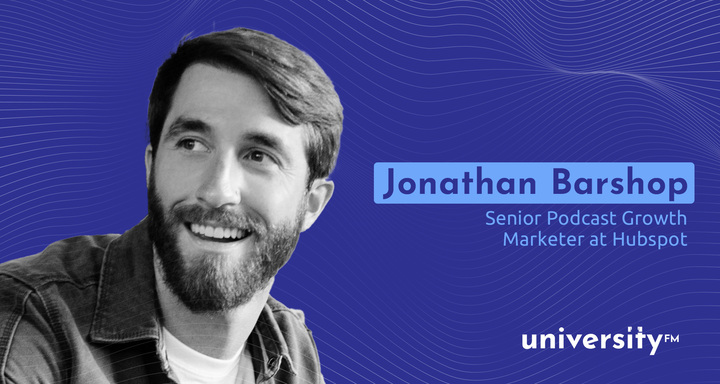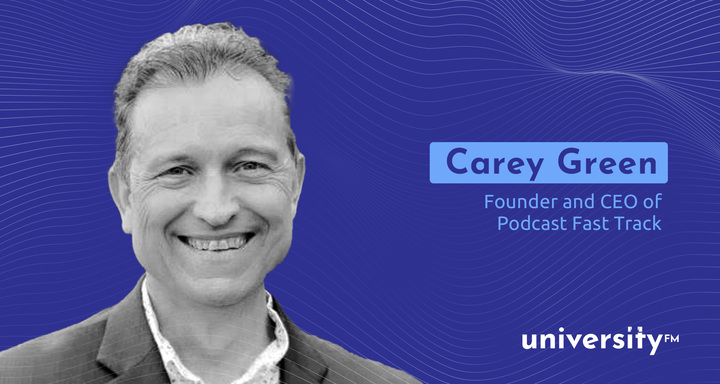Podcasts are a bit like modern-day radio shows; only they’re easier to make and cheaper to produce. All you need is a mike (or two), a digital recorder, and the willingness to talk and keep the whole thing interesting.
Once you’ve recorded it, you can post the episodic audio-content concerning a specific niche on platforms such as iTunes, SoundCloud, YouTube, Spotify, and many others. All podcast-related software you’ll need is free, and your audiences are sure to find the streaming apps and podcasting services easy to use.
Podcasts are a surprisingly effective way of attracting new audiences and building a loyal customer base. As an increasingly popular form of expression for business owners, podcasts have proven to attract a loyal following that is easy to turn into customers. You can also get traction without dealing with too much competition, as it’s still a newish trend compared to, say, blog posts.
As a small business owner, you’ll find that podcasts help you build brand authority, capture your audience’s attention, and, eventually, turn your listeners into repeat customers. In the article below, you’ll learn more about how to make the most out of your podcast.
You’ll discover exactly how podcasts can benefit your business, and how you should write and structure your audio series to help you stay entertaining as well as informative. Do this right, and you’ll be sure to start seeing huge benefits from your podcast soon enough.
How a Podcast Can Benefit Your Small Business
As many as 40% of SMB owners listen to podcasts weekly at least. Also, research has shown that listening to business podcasts increases consumer intent by 14%+. These insights bring to light the two most obvious benefits of having a podcast- building brand authority, and increasing convertible traffic.
How does hosting an online show translate into business success though? Let’s break that down.
Building Brand Authority In Your Respective Industry
Most consumers who purchase online or in brick and mortar stores have one thing in common – they do their research online before committing to a purchase. This is why it’s crucial to capture their attention.
A quality podcast can ultimately serve as sound advice on making a purchase. This is what most business podcasts should aim to accomplish. The process is simple – do in-depth research, deliver important information in an easygoing, conversation-like manner, and occasionally spice things up with interesting guests.
There’s nothing more to it, and if done right, regular podcasting that provides value will show up in search results. Your audiences? Potential customers, other business owners, your employees, and enthusiasts. All relevant participants in building solid brand authority.
Passive Consumption
You can listen to a podcast anywhere, as all you need is headphones and around 40% of your attention. People usually listen to podcasts at their most vulnerable – when they are bored.
This includes drives/walks to work, doing the dishes, and if your hair is long enough excruciatingly dull business meetings. Reaching your audiences with audio content is, therefore, a low-effort investment on their part, especially compared to blog posts, reports, or even infographics.
With minimum effort required from your audiences, you can get their attention, build authority, and raise their purchase intent.
Giving Your Business and Your Brand a Human Voice
With human voices communicating directly to your audiences, you have a higher chance of impacting your audiences’ emotions. Also, the desired intonation, tone, humor, and an approachable, chatty style are staples of the podcast format.
It’s far more difficult to achieve the said effects using written content. Most of all – the friendly, easygoing communication style joined with passive consumption lowers your audience’s natural inhibitions to trusting strangers.
In the end, a predictive, regular broadcasting schedule humanizes your brand and company. You can praise your employees, as well as send awards, discounts, and free trials to loyal listeners. Your audience will feel seen, special and appreciated, and are therefore will like you more as a result.
Make New Cross-Industry Connections
When it comes to networking using podcasts as a marketing tool, the possibilities are endless. You can invite guest speakers, promote related (but non-competitive) products and services for a reasonable commission, and get other business owners to do the same for you.
Inviting reputable experts to explain or offer a fresh perspective also makes your business appear responsible and serious about doing research. The best guest speakers are people with a wide audience base of their own.
Podcasts Help Increase Your Sales
Financial benefits are the ultimate goal of every marketing effort, including podcasts. Provided that you do thorough research and create value for your audiences, podcasts can help you grow your business’ income. Just like in written content marketing, you can use the podcasts to promote your products and services.
Integrate the brief info on what you’re selling organically, during a friendly chat. For example, if you are a financial planner, you can work your retirement plans into the informative bits of the podcast.
As soon as you have reached a wide enough audience, you can do the same for other, related fields and industries, and make money as an affiliate. Make sure to ask your cross-industry guest stars and friends to return the favor, and send convertible traffic your way, for your mutual benefit.

Long-Term Content Produces Long-Term Listeners and Loyal Customers
A hidden gem among the many benefits of podcasting as a marketing effort has to be the solid audience, soon-to-be customer base. Here’s the deal. While it mostly takes 4-10 minutes to skim through a blog post, a podcast can be anywhere from 15 to 5 hours long. It all depends on what you’re trying to accomplish.
A small tip – in the case of longer podcasts, it helps to split the post to thematic wholes and hyperlink them in the description, as not all you have to say is equally important for all listeners. These function as subheads in a long text.
The more direct and human communication of the podcast format allows you to deliver more information. Enrich your audio content with the latest analysis, research, and scientific findings in your respective area, and make the info fun and easy to understand.
This helps your efforts to build brand authority and affect the emotions of your future customers. You can use the uniquely long format and episodic structure of your podcast to pique your audience’s interest, provide value, and make them believe you’re the best at what you do.
How To Structure Your Business Podcast to Suit Your Audience
The most challenging part of structuring your podcast to best suit the needs of your audiences is identifying the audiences and the needs in question.
Identify Your Audience
Before you go into deeper research, you’ll need to draw up a rough draft of the ideal target audience for your podcast. Then, you’ll be able to accommodate their potential needs.
Let’s say that if you’re a small business owner selling hiking equipment. You don’t want your podcast to be about outdoorsy experiences in general or an overly specific niche such as ice climbing. So, the best idea would be to cover a wide range of hiking experiences as well as hiking enthusiasts of various ages and fitness levels. Some elderly hikers might just purchase specific clothes or shoes for harsh conditions, while some more extreme rock climbers might need ropes, cord, and webbing.
Draft a Format That Suits Their Needs
Once you’ve figured out who you want to target with your podcast, it’s time to think about the best format to suit their needs. When is your audience most likely to listen to your podcast? During their daily drive to work? While exercising? While taking their dogs for a walk? Your audience’s interests and daily habits all play into figuring out the proper episode length and upload frequency.
Here’s the most common type of podcast format:
- Intro music
- Topic presentation
- Host(s) discuss the topic and/or interview a guest
- Host(s) summarise and close the episode
- Outro music
The bottom line is, you’ll probably want to go with this format if you’re just starting, mostly because your audiences are used to it. Once some time has passed and you have acquired a following, you’ll have the time to be innovative.
Research on the specific online behaviors and habits of the people already listening to your podcast to reach more people like them. Conduct online surveys where you ask them about their favorite parts or potential changes they’d like to see, etc.
Determine the Right Upload Frequency
As for upload frequency, you can go with daily, weekly, or seasonal podcasts, with separate “seasons” concerning different topics. One 4-episode season with new episodes uploaded every week, for example, could be about the best hiking gear for people who are only just starting.
Each episode could be focused on different aspects of the topic your audiences should know about. Frequent problems you need to overcome, what you didn’t know you need to bring with you, etc.
Choose the Right Music
As for your intro and outro music, you can hire one of the thousands of freelancers available on Fiverr. Find a professional that matches your budget options and have them fix up a catchy, non-distracting melody that would make you stand out.
After you have reached a substantial audience, you’ll want to think about inviting guests from related industries. This will help you build brand authority and acquire some of your guest’s traffic.
You can either invite them as a co-host or do an interview. In case you’re thinking about the interview format, the structure is slightly different:
- Intro music
- Host(s) introduce the guest and the topic
- Interview – recorded online
- Host(s) summarises and close the interview
- Outro music
As for the interview episodes, each could be structured around answering a set of pre-prepared questions and providing value through a dialogue with a guest expert. As your audience grows, and your show becomes increasingly demanding, you’ll need to become increasingly tech-savvy.
You’ll be planning the content, doing in-depth research, form partnerships with other business owners, and that’s just the beginning. You’d also need to record the audio, pick out the music in case of music breaks, as well as edit speech, and make it all fit together nicely.
How to Turn Views into Actions
Your target audience as a podcaster is pretty much everyone who listens to podcasts. Still, as you’re approaching your podcast from a business perspective, you’ll want to turn your listeners into customers.
You’ll need your podcast to be broad enough to make you seem like an authority in the industry and attract listeners. Still, you’ll also need it to be specific enough to attract audiences potentially interested in purchasing your products.
So how do you help your visitors make this transition from listeners to paying customers, and then repeat customers?
First, you’ll need to start integrating your soft sales pitches throughout your podcast. In the example of a hiking podcast for an SMB selling hiking equipment, it would be a good idea to mention some of your products as an adequate choice.
In time, it would also be a good idea to start offering awards and host giveaways featuring less pricey gadgets from your store. Your loyal listeners will have to be awarded and enticed to keep listening to the podcast and stay with you.
Final Words
An entertaining podcast with well-researched content and outgoing hosts can take your brand a long way. You can get your ideas and unique niche knowledge across to future clients, other business owners, and enthusiasts.
Podcasts have proven to provide a more direct, human, and entertaining approach to building brand authority and a solid prospect base.
Check out some of our advice, and try launching a podcast of your own. If you do things right, the purchase intent in your users is bound to increase, and you’ll become a go-to source of information in your niche.




